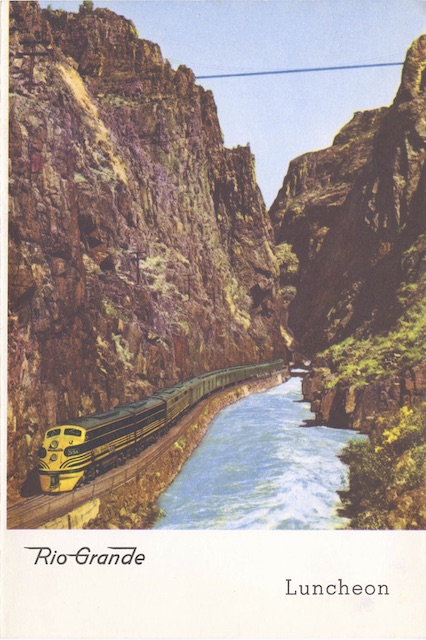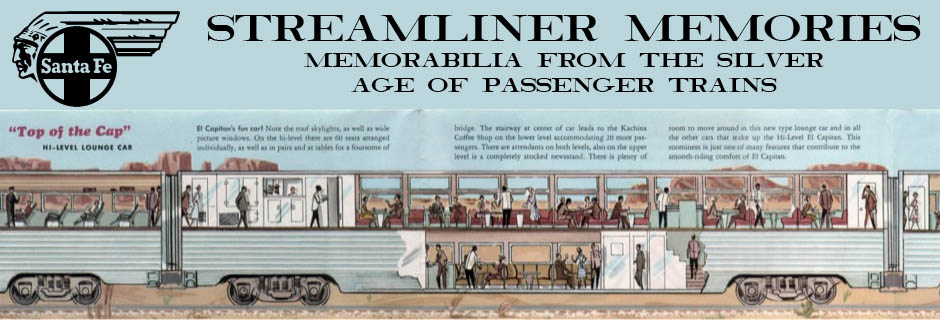While yesterday’s Twin Lakes menu had a photo of the Royal Gorge on the back, this one has it on the front. The photo on the back is the classic shot of two California Zephyrs meeting at Grizzly siding in Glenwood Canyon.
 Click image to download a 1.6-MB PDF of this menu.
Click image to download a 1.6-MB PDF of this menu.
Inside, today’s menu is identical to yesterday’s. Both menus used the dates “June 25-26,” which indicates that the Prairie Farmer tour took the Royal Gorge route rather than the Moffat Tunnel route. While the latter would get from Denver to Salt Lake City in one day, the former route was longer and required an overnight trip. Either way, there was only one opportunity for lunch, which is why the menu interiors are identical.
This 1950 timetable — which uses the same two photos on its front cover and the Twin Lakes photo on the back — shows that the Royal Gorge left Denver at 8:50 am, just ten minutes after the California Zephyr. Passengers might sit down to lunch as the train was leaving Pueblo at 12:10 and be able to return to their seats before arriving at Cañon City at 1:15. Then they could view the namesake gorge from their seats, the observation lounge, or, if they were lucky, the vista dome.
It would be almost 8:30 pm before the train arrived in Glenwood Springs, which the more direct California Zephyr left at 2:01 pm. While the Zephyr arrived in Salt Lake City a little more than eight hours later, averaging 49 mph, the Royal Gorge took nearly twelve, averaging just 32 mph, mainly because it made 15 scheduled stops plus several flag stops instead of just three. In addition, the railroad probably assumed that people would rather arrive in Salt Lake in daylight instead of the middle of the night.
